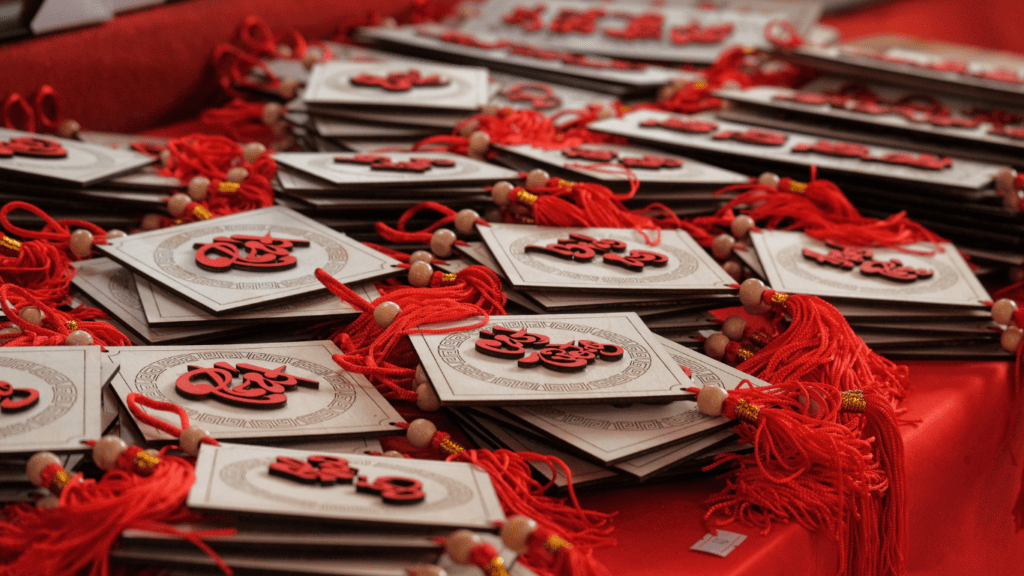Understanding Lucky Charms
The belief in lucky charms spans cultures and centuries, serving as a testament to human fascination with controlling fate. These objects often promise protection or prosperity through seemingly mystical means.
Origins And History Of Lucky Charms
Lucky charms trace their roots to ancient civilizations. Egyptians used scarabs as symbols of regeneration, while Vikings crafted charms from various metals. These items acted as symbols or talismans believed to hold supernatural powers. Over time, charms evolved, integrating with folklore and traditions to become personalized amulets.
Common Types Of Lucky Charms
Lucky charms come in diverse forms, each with unique cultural significance. Horseshoes, often hung above doorways, are seen as symbols of protection and fortune. Four-leaf clovers are rare finds and considered harbingers of good luck. Rabbit’s feet, particularly in Western cultures, offer good fortune when carried. Other common charms include:
- coins
- crystals
- colored threads
Each charm is imbued with a history that influences its perceived power and role in belief systems.
The Psychology Behind Belief In Lucky Charms

Belief in lucky charms often stems from psychological phenomena. When examining how these beliefs influence behavior and perception, two key concepts emerge.
The Placebo Effect
- The mind can create real outcomes when influenced by expectations.
- This phenomenon, known as the placebo effect, explains why people report feeling luckier or more successful when carrying or using their charms.
- When individuals believe that an object holds special power, they may experience increased confidence and a positive outlook, which can translate into improved performance or a heightened sense of well-being.
- Studies suggest that the psychological boost from a placebo can even affect physical outcomes, showing the significant impact of belief on personal experiences.
Cognitive Biases And Superstitions
The human brain often relies on cognitive biases to process information rapidly, which can bolster superstitious beliefs. Pattern recognition is a key bias where mind tendencies make connections between unrelated events, leading to the attribution of successful outcomes to lucky charms. Another bias, confirmation bias, involves focusing on instances where the charm seemingly provided luck, ignoring the times it didn’t. These biases contribute to the persistent belief in lucky charms, reinforcing superstitions through anecdotal evidence and selective memory. Understanding these psychological underpinnings sheds light on why belief in lucky charms persists across cultures and time.
Scientific Studies On Lucky Charms
Scientific studies provide insights into the efficacy of lucky charms, examining their impact on belief and behavior.
Experiments And Results
Several experiments have explored the influence of lucky charms. A study by Damisch et al. (2010) demonstrated that participants performed better on tasks when allowed to keep personal charms. Researchers attributed this to increased self-efficacy because of the charms. In another experiment, individuals with a charm reported feeling more confident in unfamiliar situations, enhancing performance. While these studies reveal a connection between belief and performance, the underlying mechanisms include psychological factors.
Criticisms And Limitations
Critics argue that studies on lucky charms often lack rigorous controls. The placebo effect could skew results, making it hard to isolate the charm’s effect from participants’ beliefs. Some researchers point out that positive results might stem from short-term boosts in confidence rather than genuine luck alteration. Additionally, most studies rely on self-reported data, raising questions about subjective biases. Despite these limitations, ongoing research seeks to clarify these phenomena and understand their implications better.
Cultural And Social Influences
Cultural and social influences shape our beliefs in lucky charms, embedding them within traditions and popular culture. These elements contribute to the charm’s perceived power.
The Role Of Tradition And Rituals
Traditions and rituals often sustain the belief in lucky charms across generations. Many customs involve charms, like wedding rings symbolizing eternal love in marriage ceremonies. Cultural rituals imbue these objects with meaning, strengthening their influence. Even in sports, athletes often follow specific routines, including wearing lucky socks or items, to maintain focus and confidence.
Media And Popular Culture Impact
Media and popular culture amplify the allure of lucky charms. Movies, television shows, and advertisements frequently feature these objects as symbols of fortune. Characters in films might carry a special charm, suggesting its role in their success. This portrayal reinforces superstitious beliefs, making charms seem essential for success. Social platforms further expand charm popularity, with influencers showcasing their personal lucky items, perpetuating belief in their effectiveness.



 Founder of Key Gamble Lucky, Erniest Adkinseler is dedicated to providing in-depth gambling news, debunking common myths, exploring the dynamics between luck and skill-based games, analyzing the psychology of luck, and offering the latest legal updates in the gambling industry. With a deep passion for unraveling the complexities of gambling, Erniest strives to create a platform that educates and empowers players. Through insightful analysis and expert commentary, Erniest aims to equip readers with the knowledge and confidence they need to make informed decisions and navigate the world of gambling more responsibly.
Founder of Key Gamble Lucky, Erniest Adkinseler is dedicated to providing in-depth gambling news, debunking common myths, exploring the dynamics between luck and skill-based games, analyzing the psychology of luck, and offering the latest legal updates in the gambling industry. With a deep passion for unraveling the complexities of gambling, Erniest strives to create a platform that educates and empowers players. Through insightful analysis and expert commentary, Erniest aims to equip readers with the knowledge and confidence they need to make informed decisions and navigate the world of gambling more responsibly.